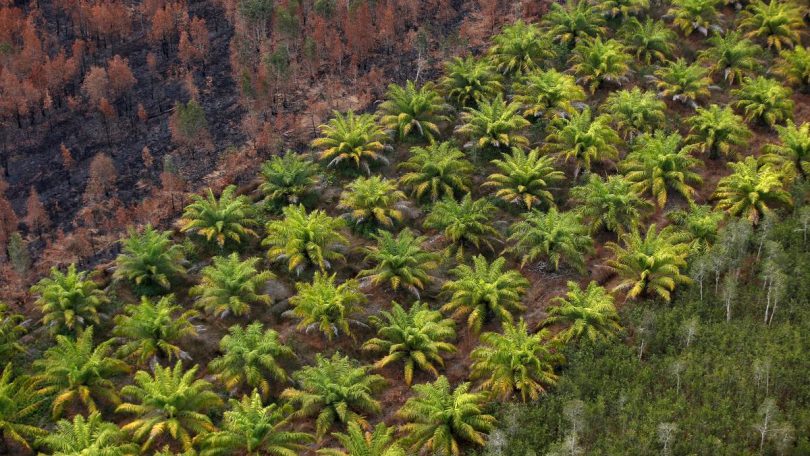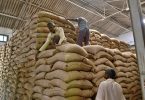[ad_1]
The story so far: Indonesia, the world’s biggest producer, exporter, and consumer of palm oil, would be banning all exports of the commodity and its raw materials from April 28 to reduce domestic shortages of cooking oil and bring down its skyrocketing prices, the country’s President, Joko Widodo, announced on Friday, April 22, 2022.
Indonesian Finance Minister Sri Mulyani Indrawati said the move would hit supplies of palm oil in other countries and was “among the harshest moves” the government undertook to stabilise the price of cooking oil in the country, calling it necessary nonetheless.
This announcement came amid already surging global food prices as a consequence of the ongoing Russia-Ukraine conflict. Food prices rose by nearly 13% globally in March according to the United Nations. It also came on the same day that policymakers raised global food security concerns at the spring meetings of the World Bank and International Monetary Fund in Washington D.C., emphasising that countries should avoid hoarding food stocks and refrain from exercising export controls.
How important is palm oil to global supply chains?
Palm oil is the world’s most widely used vegetable oil with its global production in the year 2020 being over 73 million tonnes (MT), according to the United States Department of Agriculture (USDA). It is estimated to be 77 million tonnes for the current year. Made from the African oil palm, it is used as cooking oil, and in everything from cosmetics, processed foods, cakes, chocolates, spreads, soaps, shampoo, and cleaning products to biofuel.
The oil palm industry has come under criticism for what are reportedly unsustainable production practices leading to deforestation, and exploitative labour practices carried forward from the colonial era. However, palm oil is preferred by many as it is inexpensive; oil palms produce more oil per hectare than some other vegetable oil plants like soybean.
Indonesia and Malaysia together account for almost 90% of the global palm oil production, with Indonesia producing the largest quantity at over 45 million tonnes in 2021.
According to Reuters, palm oil makes up 40% of the global supply of the four most widely used edible oils: palm, soybean, rapeseed (canola), and sunflower oil. Indonesia is responsible for 60% of the global supply of palm oil. India is the biggest importer of palm oil.
Should the government be pushing for oil palm cultivation? | In Focus podcast

Why are the prices of edible oils rising?
The prices of palm oil rose this year as demand increased because of the short supply of alternative vegetable oils. The production of soybean oil, the second most-produced oil, is expected to take a hit this year due to a poor soybean season in major producer Argentina. The production of canola oil was hit in Canada last year due to drought; and supplies of sunflower oil, 80-90% of which is produced by Russia and Ukraine, has been badly hit by the ongoing conflict .
Consumers across the globe have been bearing the brunt of these factors and the pandemic driving up global edible oil prices to record highs.
After Indonesia’s unprecedented announcement to ban palm oil exports altogether, global markets of other vegetable oils saw spikes. The price of soybean oil on April 22, saw a 4.5% rise, taking it to a record high of 83.21 cents per pound on the Chicago Board of Trade. Soy oil prices have already seen a 50% rise so far this year.
Read | India set to shift diet to soft oils as Indonesia curbs palm oil
How bad is Indonesia’s palm oil crisis?
Indonesia uses palm oil for cooking purposes. The palm oil used for cooking is made by processing crude palm oil (CPO). Due to short supply of alternative vegetable oils, lower-than -expected output from second-biggest palm oil producer Malaysia due to pandemic-induced labour shortage, and the global food inflation linked to the pandemic and the Ukraine crisis, the global prices of CPO had risen significantly since the end of last year.
The price of CPO rose from an already high rate of $1,131 per metric tonne in 2021 to its highest ever price of $1,552 in February this year. The global rise affected the price of palm oil in Indonesia, which sells two types of cooking oil — expensive branded cooking oil and cheaper non-branded oil in bulk. The country saw the price of branded palm oil go from 14,000 Indonesian rupiah (IDR) per litre in March 2021, to 22,000 IDR in March this year.
In order to make cooking oil affordable, the Indonesian government introduced price caps in late January; deciding that the MRP of branded oil could not exceed 14,000 IDR, while that of the local product would remain at 11,500 IDR. The issue of consumers hoarding the commodity and reports of it being resold, made the government introduce a two-litre-per-person rule for buying cooking oil. Some sellers were inking the fingers of consumers, as done during voting, to ensure that they don’t buy twice.
Amid reports of hoarding of cooking oil by consumers and producers, and producers being discouraged from making more oil owing to the gap between rising global prices and capped prices at home, Indonesia, the biggest palm oil maker, started witnessing an acute shortage of cooking oil.
To meet domestic demands, the government announced another policy called domestic market obligation (DMO), under which it required CPO exporters to sell 20% of export volume domestically, at a fixed price of 9,300 IDR per kg. This was later increased to 30% of the export volume for domestic use.
These policies, observers said, had an inverse effect on the domestic supply as the price controls and domestic quotas became ineffective amid the global price rise. The government retracted the price caps and export quota in late March but introduced a tax on exports, should the global prices go beyond $1,500 per metric tonne.
Indonesian Trade Minister Muhammad Lutfi also accused producers of engaging in illegal hoarding and cartel practices and of acquiring illicit export permits amid the export restrictions. Investigations into both these matters are currently underway in the country.
The cooking oil shortage could in part also be attributed to Indonesia using large quantities of crude palm oil in making biodiesel, which it has branded as ‘green diesel’, despite palm oil production being known to be environmentally degrading. In late 2019, the country increased the palm oil content to be used in biodiesel to 30%. Reuters reported that it used over seven million tonnes of palm oil out of its total national output of 41.4 million tonnes in 2020, on biodiesel.
How will it impact India?
India is the biggest importer of palm oil, which makes up 40% of its vegetable oil consumption, as per the USDA. India meets half of its annual need for 8.3 million tonnes of palm oil from Indonesia. Last year, the Centre also unveiled its plan to boost India’s domestic palm oil production.
Already grappling with record-high wholesale inflation, the late January export controls exercised by Indonesia had led to a 38% rise in the landed cost of CPO in India. The price of soybean oil, most consumed after palm, rose by 29% in the country this year; while sunflower oil, 90% of which India gets from Russia and Ukraine, stopped coming in almost completely.
Amid this situation, India had requested Indonesia in March to increase palm oil shipments to make up for the short supply and expensive alternatives. Despite the rising prices of the commodity, India’s palm oil imports jumped 21% in March from the previous month as traders moved to secure alternatives to sunflower oil that could no longer be bought from Ukraine, four dealers told Reuters.
After the ban was announced by Indonesia, Atul Chaturvedi, president of the Solvent Extractors’ Association of India told The Hindu Business Line: “This uncalled-for action (by Indonesia) has got massive repercussions for India. Local prices in Indonesia may fall as a result of this decision, but prices in India may skyrocket. It is going to be a difficult time.”
[ad_2]
Source link








